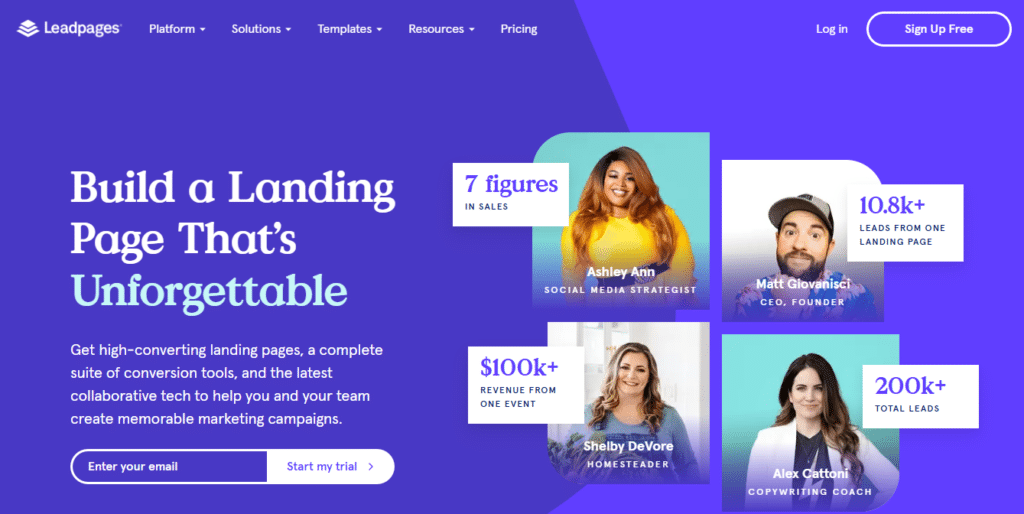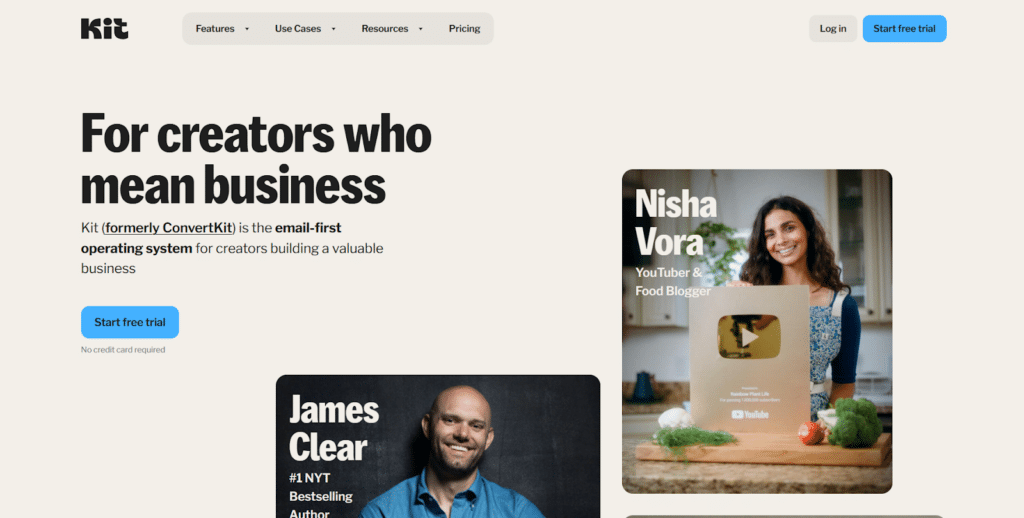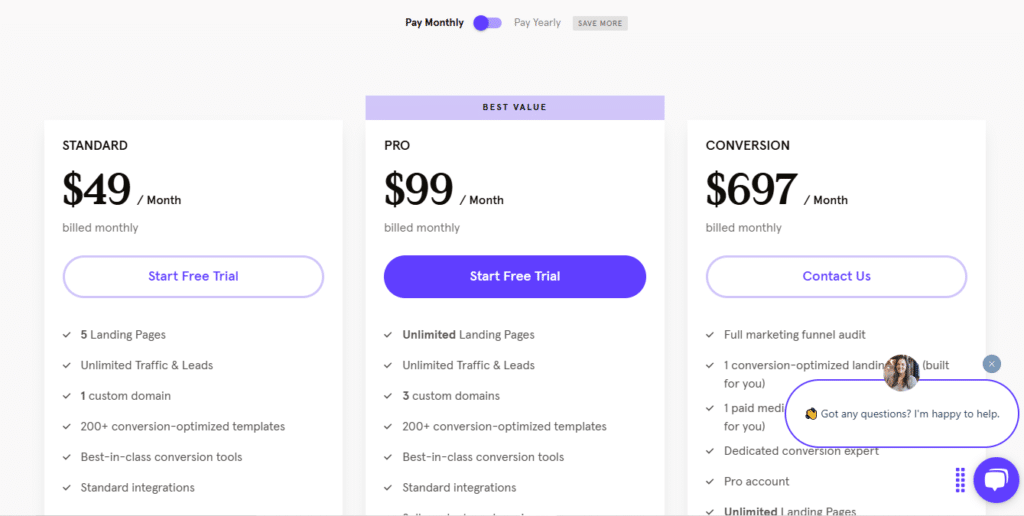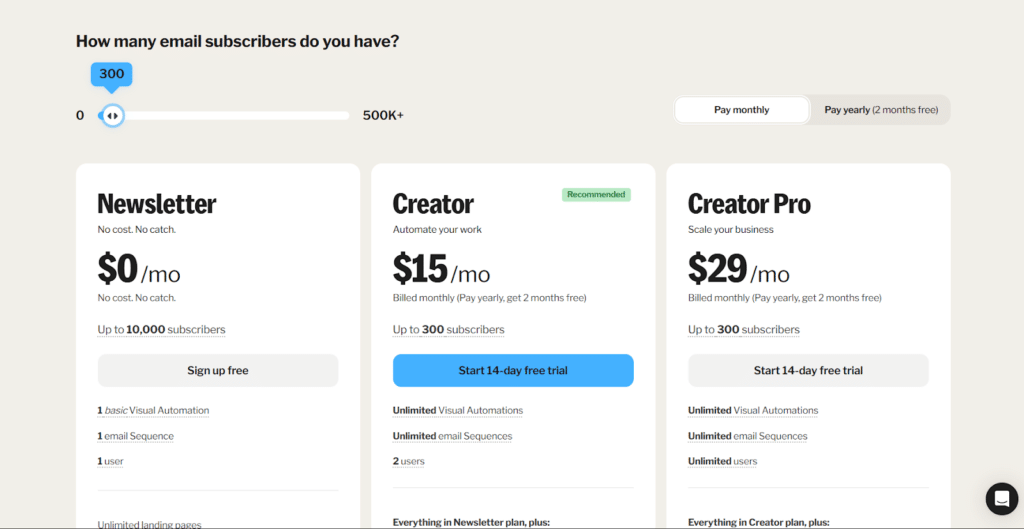LeadPages vs ConvertKit: A Comprehensive Platform Comparison
When building your digital marketing toolkit, choosing the right platforms for lead generation and email marketing is crucial for success. LeadPages and ConvertKit represent two powerful but fundamentally different tools that serve complementary purposes in the marketing ecosystem. This detailed comparison will help you understand how these platforms differ, where they excel, and how they might work together to support your marketing goals.
Overview of LeadPages

LeadPages is a dedicated landing page builder designed to help businesses, entrepreneurs, and marketers create conversion-optimized landing pages without requiring technical expertise. Founded in 2012, LeadPages focuses on making it easy to create effective landing pages through pre-tested templates and intuitive tools. The platform has since expanded to include features like site building, pop-ups, and alert bars, making it a versatile tool for lead generation.
Key Features of LeadPages
- Drag-and-Drop Editor: Create landing pages with an intuitive interface that requires no coding skills.
- Conversion-Optimized Templates: Access 200+ templates sorted by conversion rate and industry.
- Lead Magnet Delivery System: Automatically deliver downloadable content to new subscribers.
- Pop-ups and Alert Bars: Create non-intrusive lead capture elements for your website.
- Facebook Ad Builder: Design and launch Facebook ad campaigns directly from the platform.
- Integrated Checkout: Sell products and services directly through your landing pages.
- Lead Notifications: Receive real-time alerts when new leads convert.
- Basic Website Builder: Create simple, connected websites beyond standalone landing pages.
Ideal User Base for LeadPages
- Small Business Owners: Looking for an easy-to-use platform without a steep learning curve.
- Content Marketers: Focusing on lead magnet delivery and audience building.
- Course Creators and Coaches: Building pages to promote and sell information products.
- Digital Marketers: Running campaigns requiring dedicated landing pages.
- Bloggers and Content Creators: Converting readers into email subscribers.
Overview of ConvertKit

ConvertKit is an email marketing platform specifically designed for creators, including bloggers, podcasters, course creators, and other digital content professionals. Founded in 2013, ConvertKit focuses on providing powerful email marketing and automation capabilities with a straightforward, creator-friendly approach. The platform emphasizes subscriber relationships, tagging, and automated sequences rather than complex designs or overwhelming feature sets.
Key Features of ConvertKit
- Email Marketing: Create and send newsletters and automated email sequences.
- Visual Automation Builder: Design customer journeys with a simple, intuitive flowchart interface.
- Tagging and Segmentation: Organize subscribers based on interests, behavior, and other attributes.
- Sign-up Forms and Landing Pages: Create embedded forms, pop-ups, and simple landing pages.
- Creator Commerce: Sell digital products and subscriptions directly through ConvertKit.
- Subscriber Management: Detailed subscriber profiles with activity history and custom fields.
- Advanced Reporting: Track performance metrics including opens, clicks, and conversions.
- Third-party Integrations: Connect with various tools and platforms in the creator ecosystem.
Ideal User Base for ConvertKit
- Content Creators: Bloggers, YouTubers, podcasters, and newsletter writers.
- Course Creators: Building and nurturing an audience for online courses.
- Authors and Writers: Managing reader relationships and book launches.
- Coaches and Consultants: Nurturing leads and delivering consistent value via email.
- Digital Product Sellers: Marketing and selling info products and digital downloads.
Core Functionalities Comparison
Understanding how LeadPages and ConvertKit compare across key functionality areas will help you determine how these platforms might work together or which might better serve your specific needs.
1. Landing Page and Form Building
LeadPages provides a sophisticated landing page building experience with its section-based drag-and-drop editor. The platform offers 200+ professionally designed, conversion-optimized templates sorted by historical performance data. LeadPages excels in landing page customization, mobile responsiveness, and conversion-focused features like two-step opt-ins, countdown timers, and video backgrounds. The platform's Pop-up and Alert Bar features extend lead capture capabilities beyond landing pages to any website.
ConvertKit offers a more basic landing page builder with approximately 50 templates focused on simplicity rather than extensive customization. The editor uses a block-based approach with limited design flexibility compared to LeadPages. ConvertKit's landing pages are primarily designed for quick deployment of simple opt-in pages, product launches, or event registrations rather than highly customized marketing campaigns. While functional, the landing page capabilities are clearly secondary to the email marketing features.
2. Email Marketing Capabilities
LeadPages does not include native email marketing capabilities. The platform focuses exclusively on the lead capture stage and relies on integration with email service providers (including ConvertKit) for follow-up communication. LeadPages does offer a Lead Magnet Delivery system that can automatically send downloadable content to new subscribers, but this feature addresses immediate fulfillment rather than ongoing email communication.
ConvertKit provides comprehensive email marketing as its core functionality. The platform offers an intuitive email editor that prioritizes content over complex design, broadcast emails for newsletters and announcements, and automated email sequences for nurturing. ConvertKit's approach emphasizes plain-text style emails that feel personal and achieve higher deliverability rates. The platform includes features like A/B testing subject lines, delivery timing optimization, and detailed engagement analytics specifically designed for email performance.
3. Automation and Segmentation
LeadPages offers limited automation capabilities focused on the conversion moment rather than long-term subscriber journeys. The platform allows for basic conditional actions like showing different confirmation messages or redirecting to different thank you pages based on form submissions. For sophisticated audience segmentation and behavioral automation, LeadPages relies on integration with dedicated email marketing platforms.
ConvertKit excels in automation and segmentation with its visual automation builder that allows creating complex subscriber journeys based on actions, tags, and custom fields. The platform's tagging system enables precise segmentation for targeted messaging, while custom fields allow for personalizing content at scale. ConvertKit's automation capabilities include conditional splits, time delays, and action-based triggers that can create sophisticated nurturing sequences tailored to subscriber behavior and preferences.
4. E-commerce and Sales Features
LeadPages includes integrated checkout functionality through Stripe, allowing users to sell products and services directly from landing pages without a separate e-commerce platform. This feature is particularly useful for selling digital products, course enrollments, coaching services, or event tickets with minimal setup. LeadPages also offers A/B testing for optimizing sales pages and conversion tracking to measure ROI.
ConvertKit provides creator commerce features designed specifically for digital products and subscriptions. The platform allows for creating product pages, managing payments through Stripe, and automating delivery of digital products. ConvertKit's commerce functionality integrates natively with its email marketing, enabling automated follow-ups based on purchase behavior, abandoned cart sequences, and customer segmentation. While not designed for physical products or complex e-commerce, ConvertKit excels in selling digital products directly to an email audience.
5. Integration Capabilities
LeadPages offers integration with 40+ popular marketing tools, including email marketing platforms, CRMs, webinar software, and analytics services. Notable integrations include Mailchimp, ConvertKit, AWeber, HubSpot, Salesforce, and major analytics platforms. LeadPages also connects with Zapier, extending its compatibility to thousands of additional applications. These integrations are primarily designed to pass lead information from LeadPages to other systems for further processing and nurturing.
ConvertKit provides direct integration with over 90 tools and services relevant to the creator economy, including WordPress, Shopify, Teachable, Kajabi, Squarespace, and Wix. These integrations focus on synchronizing subscriber data, tracking conversions, and streamlining workflows between content platforms and ConvertKit's email marketing system. Like LeadPages, ConvertKit also offers Zapier integration for connections with additional services.
Pricing Comparison: LeadPages vs ConvertKit
Understanding the pricing structures of both platforms is crucial for making a cost-effective decision based on your business requirements.
LeadPages Pricing Plans

LeadPages offers straightforward pricing with three main tiers:
Standard Plan ($49/month when billed monthly, $37/month when billed annually)
- 1 site
- Unlimited landing pages
- Pop-ups and alert bars
- Free custom domain
- Mobile-responsive site templates
- Lead notifications
- Tech support
Pro Plan ($99/month when billed monthly, $74/month when billed annually)
- 3 sites
- Everything in Standard
- Online sales and payments
- Email trigger links
- A/B testing
- 200+ premium templates
- 10 opt-in text campaigns
- 1-on-1 quick start call
- Pro integrations
Conversion Plan ($697/month when billed monthly)
- 50 sites
- Everything in Pro
- Advanced integrations
- 50 extra opt-in text campaigns
- Bulk SMS
- 5 sub-accounts
- Dedicated support
- 1-on-1 conversion coaching
LeadPages offers a 14-day free trial. The pricing is based on features and number of sites rather than visitors or leads, with unlimited traffic across all plans.
ConvertKit Pricing Plans

ConvertKit's pricing is primarily based on subscriber count, with two plan types:
Newsletter Plan (Free)
- Up to 1,000 subscribers
- Unlimited landing pages and forms
- Sell digital products and subscriptions
- Email broadcasts
- Community support
Creator Plan (Paid)
- $15/month for up to 1,000 subscribers (scales with subscriber count)
- Everything in Free plan
- Automated sequences
- Visual automation builder
- Third-party integrations
- Free migration from another tool
- Live chat support
Creator Pro Plan
- $29/month for up to 1,000 subscribers (scales with subscriber count)
- Everything in Creator plan
- Facebook custom audiences
- Newsletter referral system
- Subscriber scoring
- Advanced reporting
- Team members
- Priority support
ConvertKit's pricing increases as your subscriber list grows:
- 1,000 – 3,000 subscribers: $49/month for Creator, $79/month for Creator Pro
- 3,000 – 5,000 subscribers: $79/month for Creator, $109/month for Creator Pro
- 5,000 – 8,000 subscribers: $99/month for Creator, $129/month for Creator Pro
- And continuing to scale up
ConvertKit offers a 14-day free trial of paid plans and provides a free plan for up to 1,000 subscribers with limited features.
Making the Right Choice for Your Business
Choosing between LeadPages and ConvertKit depends on understanding their different roles in the marketing ecosystem. In many cases, these platforms serve complementary purposes rather than being direct alternatives.
Choose LeadPages if:
- Your primary goal is creating high-converting landing pages for marketing campaigns
- You need sophisticated lead capture tools including pop-ups and alert bars
- You're running advertising campaigns requiring dedicated landing pages
- You want professionally designed, conversion-tested templates
- You already have an email marketing platform you're happy with
- You need to sell products directly from landing pages without a separate e-commerce platform
- You're focused on optimizing the conversion stage of your marketing funnel
Choose ConvertKit if:
- Email marketing and subscriber nurturing are your primary needs
- You're a content creator, author, coach, or course creator
- You want powerful automation capabilities for subscriber journeys
- You need sophisticated tagging and segmentation for targeted messaging
- You're selling digital products directly to your email audience
- You prefer a platform designed specifically for creators rather than general marketers
- You value simplicity and ease of use over complex design capabilities
Consider Using Both Together if:
- You want best-in-class tools for both lead capture and email marketing
- Your marketing strategy includes both converting visitors to subscribers and nurturing those subscribers
- You need the superior landing page capabilities of LeadPages combined with ConvertKit's email marketing strengths
- You're willing to invest in specialized tools rather than compromise with an all-in-one solution
- You can manage the integration between two platforms in your workflow
Integration Between LeadPages and ConvertKit: LeadPages and ConvertKit integrate seamlessly, with LeadPages able to automatically pass new leads directly to ConvertKit, including tags for segmentation. This allows you to use LeadPages for creating high-converting entry points to your funnel, while leveraging ConvertKit to nurture those leads with targeted email sequences. This combination provides a powerful marketing toolkit that excels at both acquisition and nurturing stages of the customer journey.
Ultimately, your choice should be guided by your specific marketing needs and priorities. If lead capture and conversion are your primary challenges, LeadPages offers superior capabilities in that area. If your focus is on email marketing, subscriber relationships, and nurturing, ConvertKit provides specialized tools designed for those purposes. Many successful marketers choose to use both platforms together, creating a more effective marketing system than either tool could provide alone.